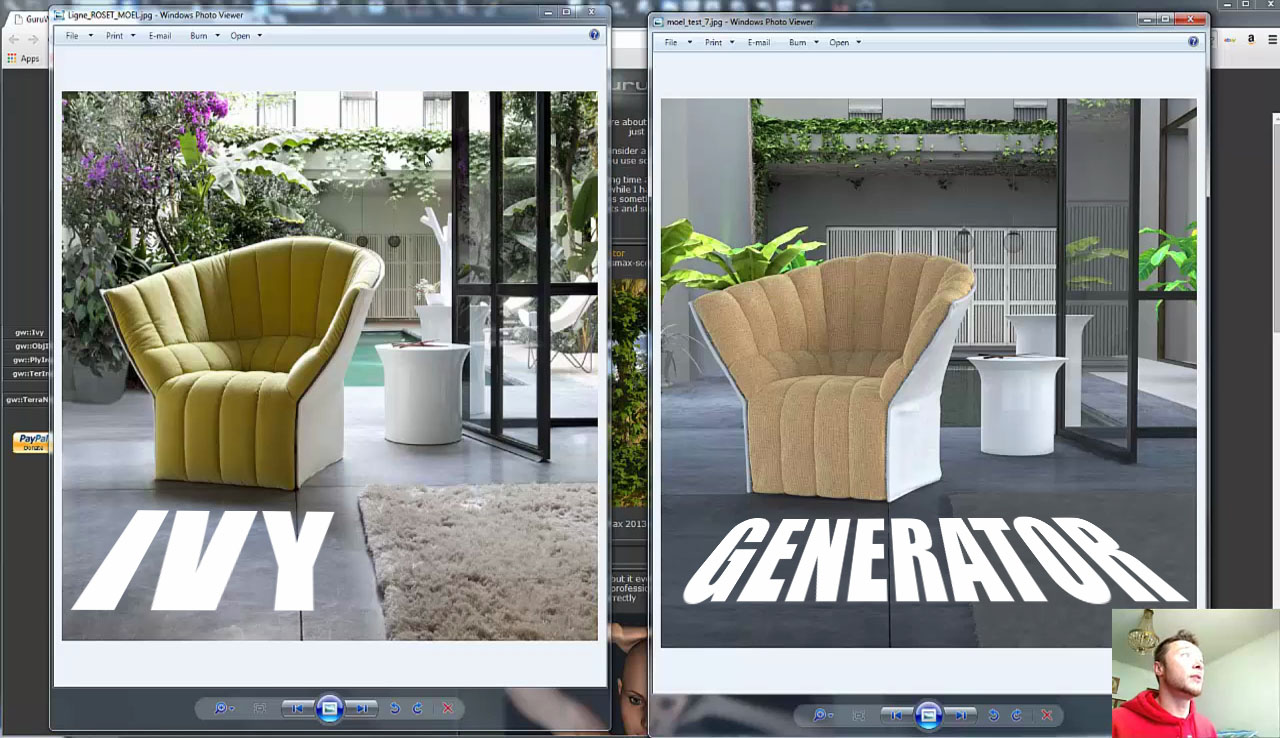In this Tutorial series i will explain some of my favorite Plugins for 3ds max and v-ray that help me in my workflow of creating architectural visualizations and can make your life much easier. In the second Tutorial i will cover the Ivy Generator plugin for 3ds max. 3ds max Plugins 2 - Ivy Generator (Free). In the second Tutorial i will cover the Ivy Generator plugin for 3ds max. I'm not able to download ivy from guruware.
The Ivy Generator is one of those ‘free for commercial use’ plugins which adds immense value to your work, yet it doesn’t cost you a dime. Believe me, this nifty little plugin is super easy to use, and has in-depth controls that would put even paid plugins to shame. Ivy Generator has been around for nearly a decade, giving 3ds Max users like us the ability to realistically simulate the growth of Ivy or Creeper plants in our scenes. Using such varied vegetation within the scene gives it that natural photorealistic touch. And using this plugin to its full potential is exactly what I’m going to be showing you today. In this guide I’ll be laying out all of its features in simple words, so you’ll be up and running in no time. The plugin is based on the standalone version. Also, do checkout his site for examples showcasing the great potential of the Ivy Generator system.
To begin, you can download the plugin from here:, just scroll to the bottom for the download link. While this page also provides instructions on using the plugin, my guide will help you better understand its practical usage. Once downloaded, unzip and put the.dlo file corresponding to your 3ds Max version into your plugins folder.
You can then access the plugin in 3ds Max from the geometry rollout under the modifier name Guruware. How Ivy Generator Works Ivy Generator works best when you’re working with real world scale within 3ds Max. 
If you already do, just follow the steps: • Select and place the Ivy object with Autogrid on any surface with correct normals. • Now press the ‘Grow Ivy’ button to start the simulation and watch it grow in the viewport. • Press again to pause.
Casio cz sysex patches clarence. Now you have a natural Ivy growth on your object. It is that simple. The generated Ivy is automatically assigned the standard 3ds Max material with textures. And you can further convert them with the VRay Scene Converter in the quad menu. Most of all, if you want a growth animation you can simply set a keyframe upto the point where you want it grow. The simulation will then run as an animation till that keyframe. The default settings will give you a natural growth, but there’s a lot more you can do with tweaking.

In the following section, I’ll go through all the various controls that can help you create anything vine-like. Features and Controls • Grow-Parameters: These are the main controls that alter how the vines spread out from their root. • Grow-Size: The higher this length, the greater the distance covered by the vines for the same amount of time. In short, it affects the maximum speed of growth for all the vines. • Up-Vector: The value ranges from -1.0 to 1.0, giving you the ability to control the direction of the vine growth. The value of 1.0 makes all vines go up, while -1.0 makes them go down and 0.0 makes them go in all directions equally. • Primary Weight: This controls how much changes in direction the vines take while undergoing simulation.
This parameter takes into account the previous direction of the vine. The greater its value, the more likely the vine will keep following its last direction and not zig-zag too much, making it close to straight.
• Random Weight: This adds a little bit of randomness to the direction of the vine for a natural growth, hence adding more curves. • Gravity: The higher the gravity, the harder it’ll be for the vines to grow upwards. • Adhesion: This parameter controls how much the vines are attracted to the mesh. For example, in a room, the higher its value, the more it makes the vines follow the corners. Distance: This is the maximum distance between the mesh and the vines, below which the adhesion parameter can influence the growth. • Branching: The greater this value, the higher the number of branches the vines create.
• Max Length: The maximum length for the branch before it dies. • Length variation: Adds variation to the length of the branches. • Max Parents: The maximum number of branches that will shoot simultaneously from the root, acting as parents for all the child branches. Helps in controlling the density of the entire growth. • Seed: Randomization number for the simulation. • Threads: Number of CPU threads to be used for simulation. • Grow Ivy: The MAIN button to start and pause the simulation.
• Turbo Grow: Optimization for reducing the simulation time. • Age and Stop at: Specifies the age of the Ivy while it is being simulated. You can also animate this parameter. While the ‘stop at’ function lets you set the maximum age.
• Mesh: Gives you the ability to change the density, size, polycount and randomization parameters for the default Branch and Leaf meshes. • View/Render: You can easily toggle the visibility of different branch and leaf elements in the viewport. • Texture: The texture rollout allows to transform the UVs for the mesh, and the option to blend the different leaf materials with their respective vertex colors. Moreover, you can set the color variation based on the age of the leaves as well. All of this ensures great looking natural textures for that added realism.